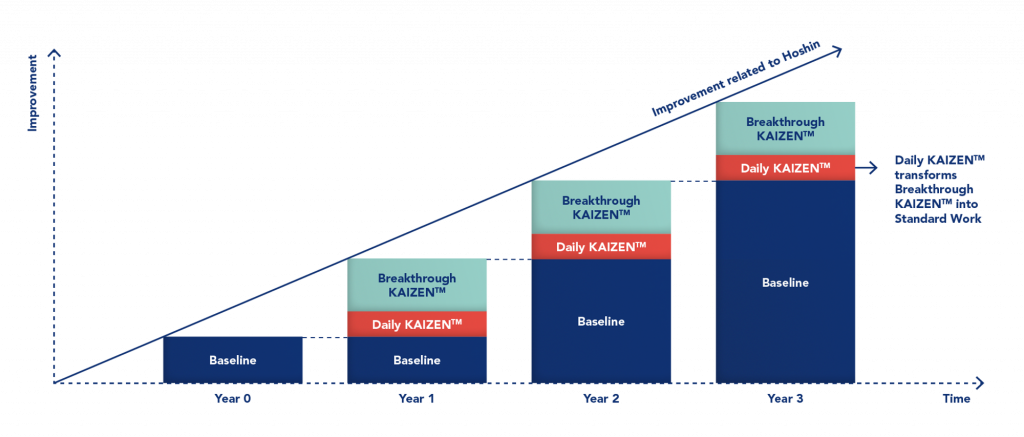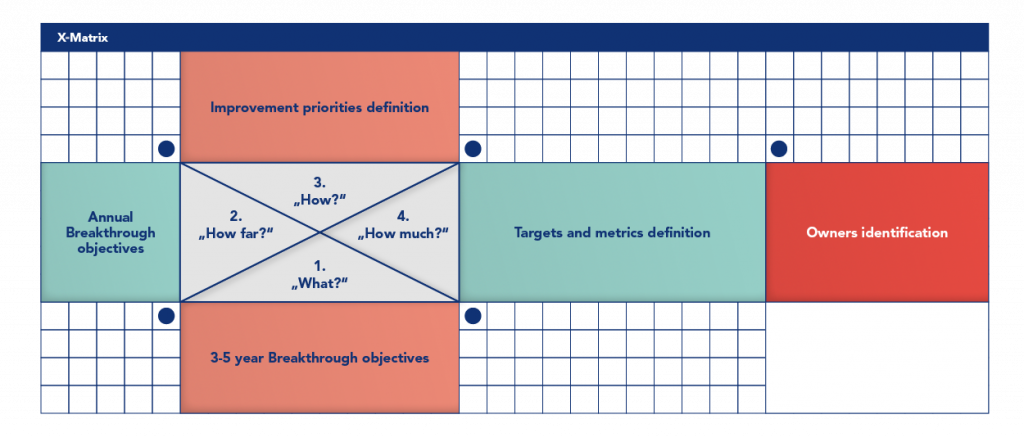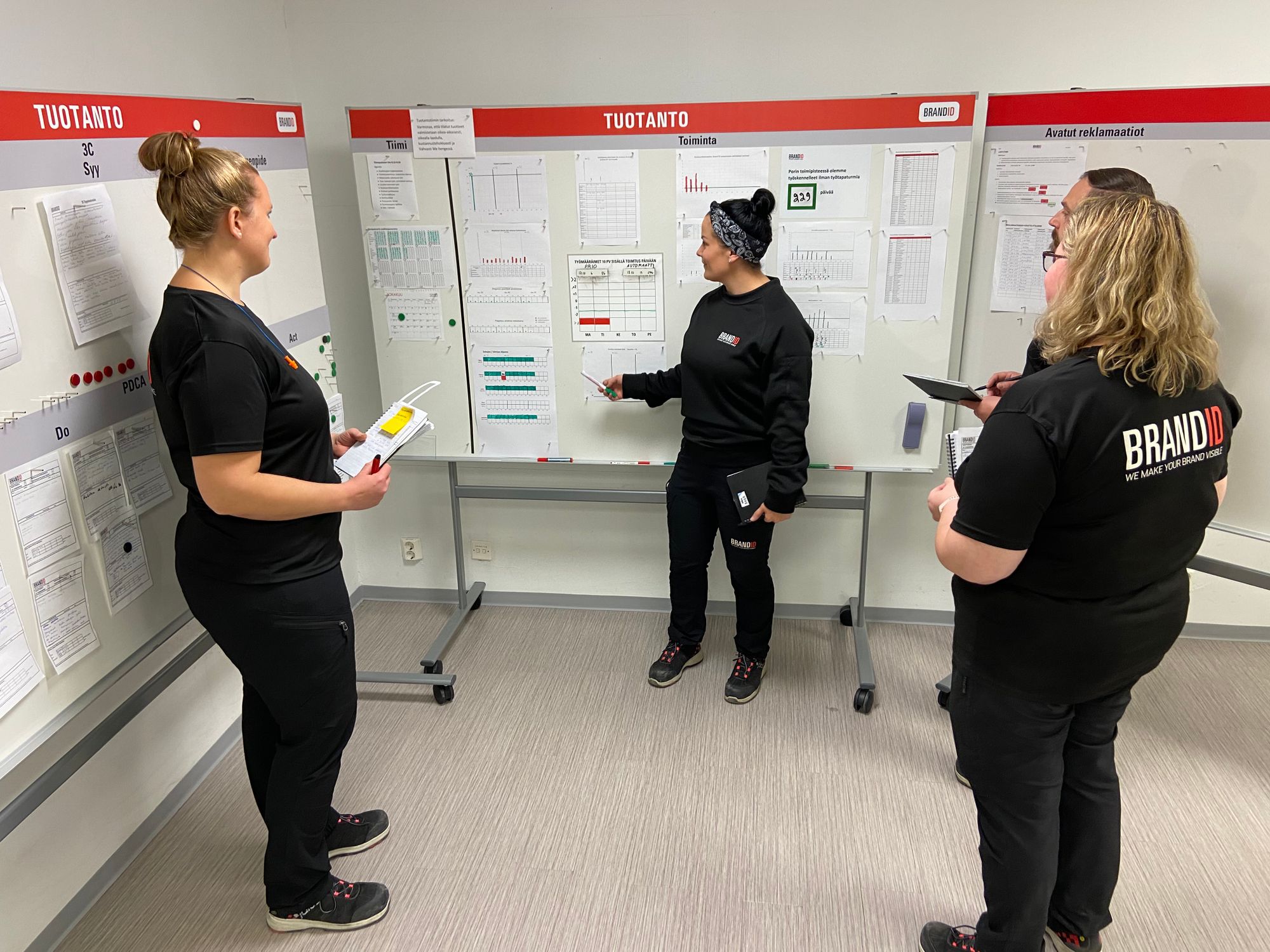The reason most businesses experience the current global situation as a crisis is that they do not have a well-rehearsed method for dealing with multiple changes. Yet, once leaders understand that strategy and action must be an integral part of the corporate culture, it becomes clear how to steer the ship toward a vision regardless of a turbulent environment.
Let’s use the current global crises as an opportunity to:
- Grow by learning from the best companies that are thriving in difficult times.
- Change by identifying harmful paradigms and breaking them down with zero tolerance.
- Strategize by making vision and strategy practical every day.
There are two types of companies: Traditional and Lean and the gap is widening
In order to thrive as a business, you have to ensure you do not make the common mistakes others are making:
- Lack of will: It is a clear indicator that a business might not survive a storm when the leadership is not eager and determined to improve.
- Lack of clarity: Managers holding opposing views of what has to be done and how it should be implemented as it leads to unclear objectives, actions, budgets, and resource allocation. Therefore, turning strategy into action in an efficient and effective way is hugely important.
- Lack of preparation: Few successful companies find themselves at the right opportunity at the right time. Hence, a company cannot succeed again and again by accident. You have to be well-prepared.
In recent years, Brand ID embarked on a journey to develop the will and clarity to succeed in difficult markets. Juha Heljakka, CEO of Brand ID, tripled turnover from 2017 to 2022 with his company and now feels prepared for any challenge that might surface: “Look at our type of business – printing, an industry struggling with steadily declining revenues. We found that consciously developing our way of working is key to success and simply the way that we grow.”
Today, Heljakka sees his encounter with KAIZEN™ as the starting point for developing leadership and culture within Brand ID. “Companies that don’t step back to re-think are in a trap. We learned to escape this hamster wheel, and now focus on moving forward each day so that we can act fast in every new situation.” Being permanently alert, communicating regularly with customers, keeping them informed, and always considering the output in relation to the necessary input, keeps Jukka Heljakka motivated.
Practicing leadership principles also determines whether a company deteriorates or grows, regardless of challenges such as inflation or material price increases. “For us, such issues are not negative, they are just a topic in general that we process in our operating system that follows the core idea: focus on customer needs and the value that we are providing to customers”, says Heljakka.
The reason so many companies struggle with the will, clarity, and preparedness of their work system, is that they focus more on their shareholders than on their customers. This self-centered approach results in a lack of growth in the current economic situation.
So, here’s how to get your viable operating system started:
1. Make strategy your daily business
The very first step to converting the new way of working into standardized work is to make the top management of a company live and breath the idea of Continuous Improvement.
“It is important to start in the leadership team because this is the basis for alignment throughout the entire company. It gives us the language to cooperate”, says Juha Heljakka, pointing to the challenge of overcoming the lack of communication and direction among different departments within a company.
Coordination in the leadership team requires a critical thinking process that is often avoided in board rooms. In KAIZEN™ terms, critical thinking includes five steps to define the organization’s objectives, which promotes discussion and consequent calibration of all those involved. The leadership team is therefore constantly challenged to commit to disruptive goals. This type of breakthrough objective should be almost impossible to achieve as seen from the current situation. This thinking makes it possible to identify what is preventing the business from growing and to let go of old paradigms that caused the original weaknesses.
The key is to combine these breakthrough objectives with daily management practices where these new standards are adopted as the new way of working in a habit-building process. Developing these new behaviours can take up to 27 consecutive days of applying the new standards, supported by Daily KAIZEN™ and enabled by Leaders’ KAIZEN™ through the checking of standards day after day. “Working this way helped us to make KAIZEN™ the core of our business system. It is now a powerful tool for daily management, and it excels in strategizing the future”, summarizes Juha Heljakka.
In summary, when strategy becomes a business’ daily business, breakthrough objectives are applied with Daily KAIZEN™, and this can multiply the results three to five times in comparison with traditional improvement approaches.

2. Focus on impact and keep deviations visible every day
The next step to convert the new way of working into standardized work is to simplify the strategy on a single page and to engage everyone in the organization in implementing it at their level.
“We do this because dealing with strategy in the same format brings meaning to each level throughout the company. We apply this practice top-down, for example, in the case of acquisitions. Doing it this way takes us less than four months to restructure a business completely. However, we also apply it bottom-up because employees have the best knowledge of removing bottlenecks in their own processes. They see it as a huge opportunity to enhance their daily work, and they can experience the change in their own workplace.”
The myth to overcome is that people are, in general, hesitant to change. Instead, leaders must understand that it is part of being human to resist change; it is a protection mechanism. The problem is usually the way change is facilitated, i.e., it often has a negative impact on people and their work.
The KAIZEN™ methodology often uses the X-Matrix to involve the entire organization in strategizing and to break strategy down on a single page in a visual format. The construction of the matrix entails the answer to the following key questions in its distinctive “X” shape:
- What do you want to achieve in 3 to 5 years?
- How far do you want to go in the first year?
- How are you going to do it?
- How will you measure success?
- Who is responsible?

The CEO’s X-Matrix (referring to the highest-level matrix) is developed first. It describes the top-level strategic priorities. These objectives are achieved by implementing the Level 1 improvement priorities, which are assigned to a person in charge who will build their own matrix. This process of unfolding creates accountability and alignment across the organization to achieve the results planned for the respective time period.
Juha Heljakka concludes: “Carrying out the X-Matrix in such a structured way, helps us to build trust. This part of the Brand ID business system has standardized our way of working together. It helps us to focus on the few things that we really have to bring forward: development projects, as well as key drivers and processes. It is a communicative exercise, quite simple and straightforward so that we can execute it at all three levels of our organization.”
Using the X-Matrix helps organizations to become better places to work. At Brand ID this is measured in an employee promoter score, leading to an enhanced work environment year-by-year.
3. Building a countermeasure culture
The final step to convert the new way of working into standardized work is to develop a culture of countermeasures.
“We have moved towards a culture of how we are acting on deviations. Any issues that require actions are handled in the same way. As soon as we identify a need for change, we can immediately apply our way of making improvements as our employees already know how to act. The way we communicate has become easier, faster, and more responsive.” – that’s how Juha Heljakka describes the countermeasure culture within Brand ID.
This culture requires the CEO to switch into a coaching role: not doing the work, but leading the teams to find impactful measures, strictly focusing on the process and allowing for ‘learning-by-doing’.
Impactful countermeasures are the template for the future. Originating from the Toyota Production System (TPS), countermeasures are distinct from problem-solving methods in that they do not identify root causes, which can be a time-consuming exercise given the number of variables to be analyzed in any business. The approach is to rather develop the ‘best method of the day’, allowing fast improvement. The aim of a countermeasure is to rectify the trend or correct the course of direction quickly, to keep the business on the right track, even when preventive action may not be immediately clear (as all the root causes have not been uncovered yet. Countermeasures seek to implement improvements fast, without having to wait for the perfect solution.
“We analyze quickly, then make sure that we see a wanted or unwanted effect from what we are doing, and then fine-tune the direction. This we do every day, based on the learning through our team board, where we record feedback from outside and inside the company and discuss it in a pragmatic way. This gives the confidence to communicate more ideas, more plans, more ideas to correct, leading to a more proactive culture”, says Juha Heljakka.
This type of countermeasure culture promotes a wide range of learning opportunities within teams, rather than just remedying a problem in a rushed way. The result is a communication system with no unwanted surprises.
That is it!
Once this new way of working has become a standard practice, it empowers a company to succeed and grow, regardless of the severity of the storm. This is enabled by making strategy a business’ daily business, by focusing on creating a positive impact and making deviations visible every day, and by building a countermeasure culture.
See more on Strategy Deployment
Find out more about transformation in this area
